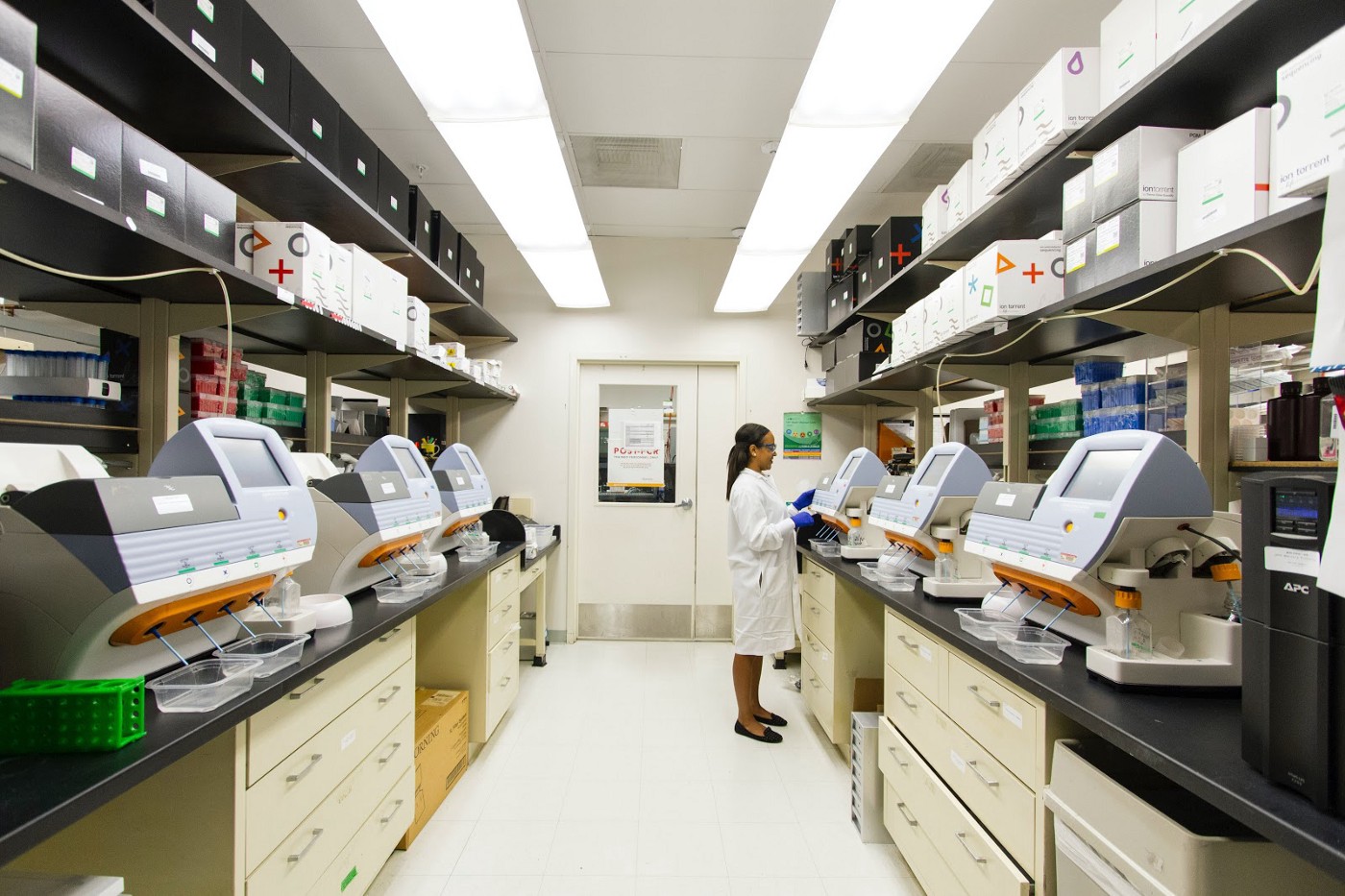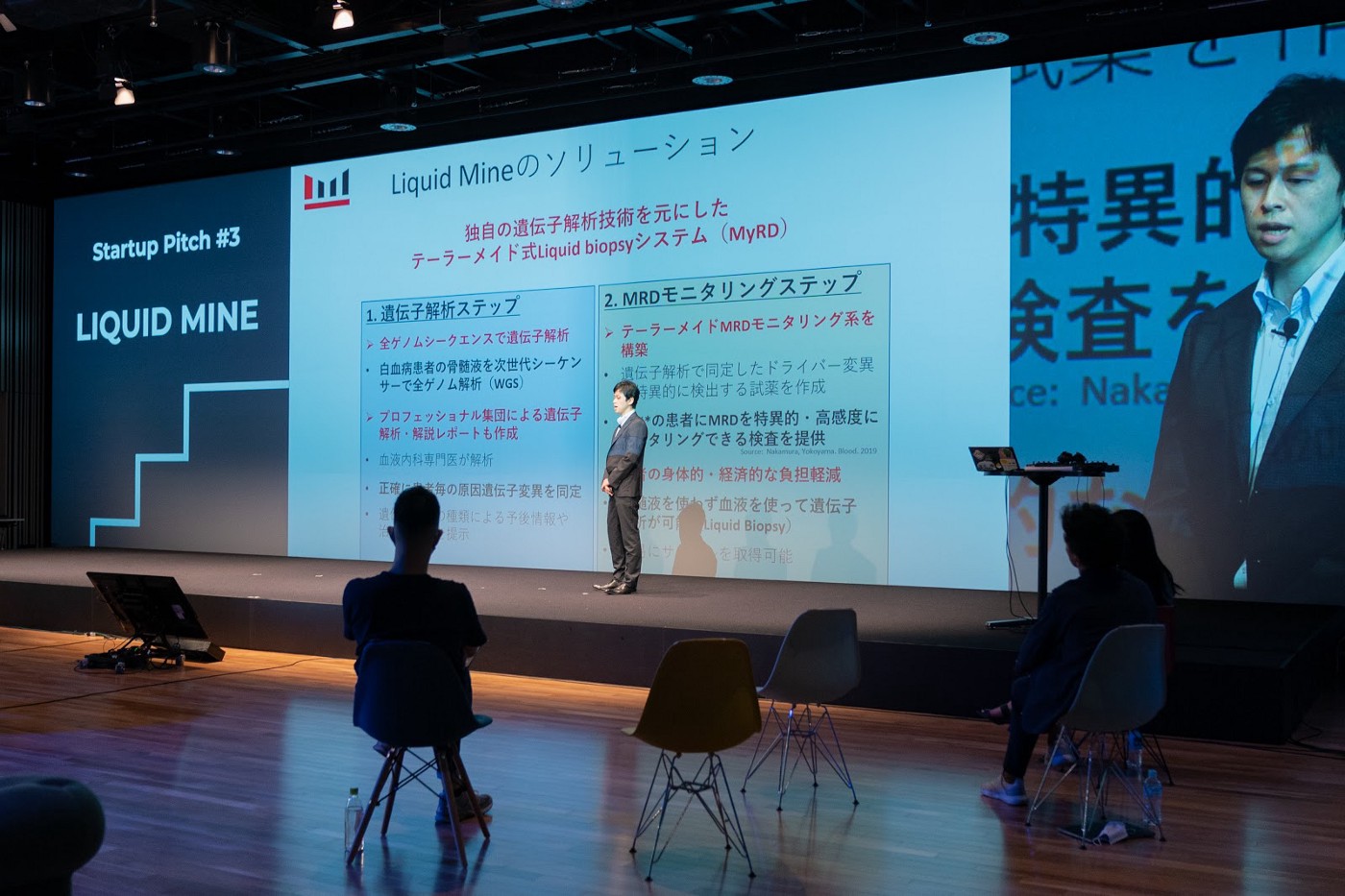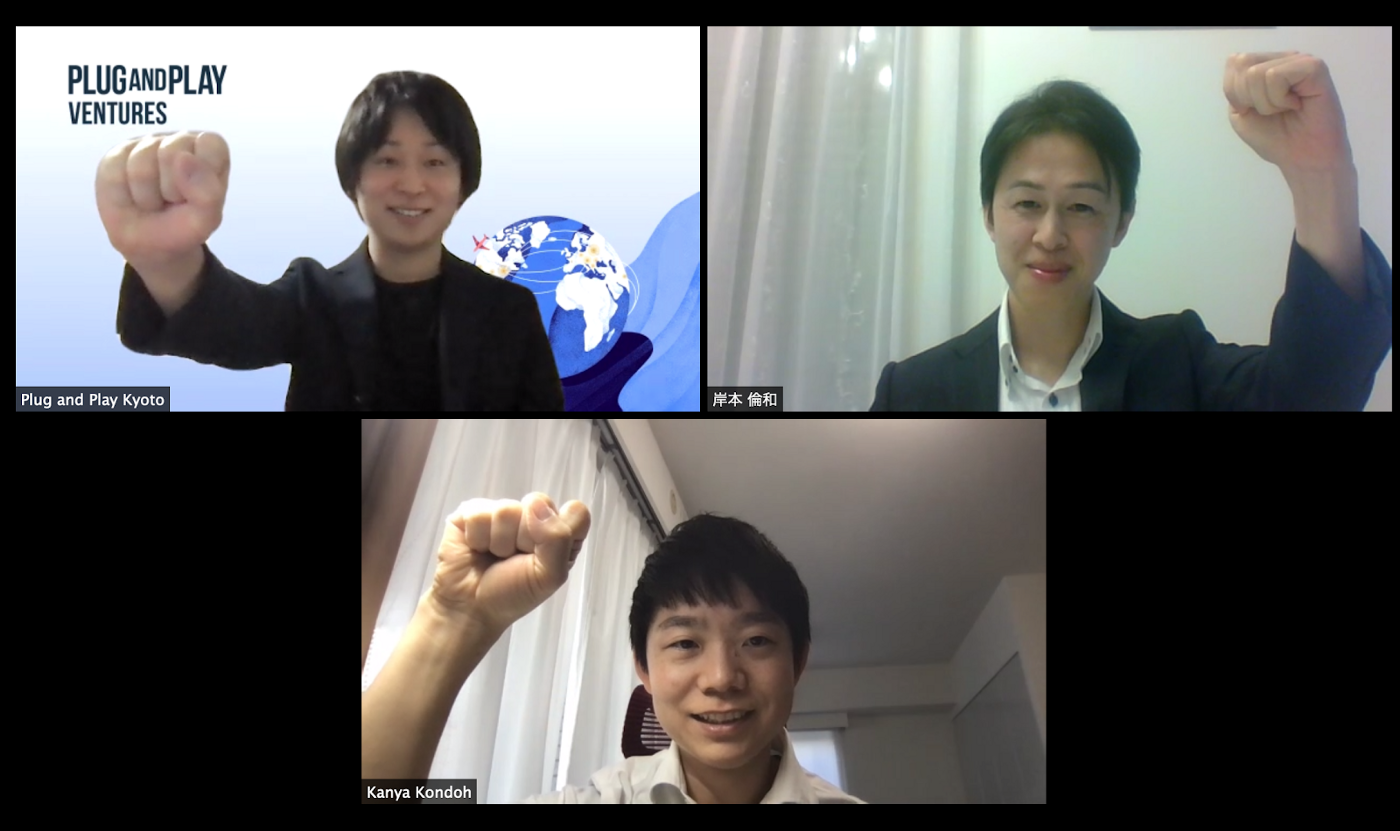Saving Patients with Painless Leukemia Testings - Liquid Mine
2022/11/08

It is estimated that the annual number of leukemia cases in Japan exceeds 14,000 (*1).
Bone marrow biopsy is a common testing procedure for leukemia, but it is very painful and physically and mentally demanding, leading to a low long-term survival rate.
Liquid Mine was established in 2019 based on gene analysis technology of the Institute of Medical Science, the University of Tokyo, and aims to realize tailor-made medical care with liquid biopsy.
In January 2021, Plug and Play Ventures invested in Liquid Mine. We interviewed Dr. Mikiya Kondo and CEO Tomokazu Kishimoto about the potential of Liquid Mine’s technology and the vision it aims to achieve.
Kanya Kondo
Founder, Liquid Mine Co., Ltd.
Born in 1987, Kanya Kondo has been engaged in the treatment of leukemia patients for 5 years as a hematologist. He enrolled in the laboratory of the Institute of Medical Science, the University of Tokyo to study genetic analysis and liquid biopsy. In November 2019, he founded Liquid Mine in order to implement an innovative testing system aimed at improving the leukemia survival rate.
Tomokazu Kishimoto
President and CEO, Liquid Mine Co., Ltd.
Born in 1981, Tomokazu Kishimoto joined a major travel agency as a new graduate and gained a lot of sales experiences at pharmaceutical companies and medical venture companies. In July 2020, he joined Liquid Mine as he resonated with Kondo’s enthusiasm and vision which is to provide a minimally invasive monitoring testing system called “MyRD” that detects the recurrence of leukemia at an early stage.
Harunori Oiwa
Plug and Play Ventures
Harunori has been in charge of investments, the health program, and university collaborations at Plug and Play Kyoto since 2019. After researching heart failure at Osaka University Graduate School, he engaged in the development of new medicine as a Clinical Research Associate. Later he studied at the University of Washington in Seattle, and experienced life science consulting in Silicon Valley before joining Plug and Play. Areas of interest: DeepTech, Health, SDGs.
The Founding
ーーHow did you start your business?
- Kondo:
I’m originally a hematologist, and therefore, I have worked in clinical practice to treat patients with Leukemia. While I was working as a doctor, I have witnessed challenges in leukemia testing and treatment. From that experience, I entered the Institute of Medical Science at the University of Tokyo and came across the technology being researched there. Coincidently, the technology researched there was precisely the solution I thought would have the potential to overcome the problems of leukemia testing, which I’ve seen at medical practicess. This discovery made me decide to start a business as I was determined that this technology should be installed into society and spread to the world. Our aim is to improve the survival rate of leukemia patients to save more lives.
- Kishimoto:
I joined Liquid Mine in July last year. I met Kondo through job hunting, and I strongly resonated with his passion during the interview. It was not leukemia, but I have lost someone close to me because of cancer. I joined because I wanted to spread this testing service to help people suffering from cancer.
ーー What factor contributed to your decision to participate in Plug and Play’s accelerator program and to receive investment from us?
- Kishimoto:
To be honest, I didn’t know about Plug and Play until I got an email from Harunori. I got interested when I saw the names of Shimadzu and Kyocera as Plug and Play’s corporate partners. I thought it would be beneficial for us to join the accelerator program, considering the fact that Plug and Play has partnerships with such large companies.

<Photo by National Cancer Institute onUnsplash>
About the Product
ーー Could you explain your competitive advantage and the uniqueness of the technology?
- Kondo:
As a global trend, genome analysis technology is being applied not only to medical treatment but also to various fields. Each approach has its advantages and disadvantages, but most of the technologies for human genome analysis are still in the research labs and have not been utilized in our society. We all know that it is better to bring whole-genome sequencing into practice, but not many researchers have actually been able to do that so far.
With Liquid Mine’s technology, we are able to make whole-genome sequencing available for hospitals, and this is a strong advantage for us as we are ahead of progress than anyone else in the same field.
The term “tailor-made medical care” is becoming more common recently. I have no doubt that there will be custom-made examinations using genome analysis in addition to treatments in the future. We would like to be a pioneer in that sense.
- Kishimoto:
I believe the whole-genome sequencing and the subsequent monitoring done by liquid biopsy instead of bone marrow fluid are the two major strengths that are unique to us.
- Oiwa
There are three main reasons why Plug and Play Ventures invested in Liquid Mine. The first one is the technological advantage which is to decrease the pain that leukemia patients have to go through. The current bone marrow biopsies require hospitalization for several days・every month, inflicting great physical, mental, and financial burdens to the patients. We believe that there is a strong need for an alternative treatment with noninvasive testing which minimizes the pain associated with surgery・examination such as fever, bleeding, etc. It increases treatment options for patients with early identification of leukemia gene mutations and contributes towards the improvement of the patient’s survival rate.
The second reason is that there are some successful precedents in the United States. Guardant Health, one of the portfolio companies of Silicon Valley headquarters, was founded in 2012 and went public in 2018. It was a relatively early IPO for a deep tech startup, and its current market capitalization already exceeded 15.24 billion USD. Both Guardant Health and Liquid Mine use liquid biopsy technology. While Guardant Health and many other companies mainly target solid tumors such as stomach or lung cancer, Liquid Mine specializes in leukemia. I think that differentiation strategy is what makes Liquid Mine so unique. The number of blood cancer patients in Japan accounts for about 10% of all cancer patients. In the United States, where the population is about three times larger than in Japan, people are diagnosed with blood cancer every three minutes which means we can expect market expansion about 10 times larger than the domestic market. We also expect an even larger market if the pipeline could be expanded to solid tumors in the future.
The third reason is the extreme importance of increasing collaborations with universities to foster the startup ecosystem in Japan. I strongly believe university-originated startups would grow significantly in the future. In addition to our accelerator program, we also engage in a student entrepreneurship event co-hosted with Kyoto University, and an incubation program that connects university-originated startups with MBA students to develop their businesses and for future CxO. We look forward to continue our support towards university-launched startups in multiple ways.

The Future Prospect
ーー Could you tell us more about your prospective vision?
- Kondo:
First of all, our primary goal is to implement our solution in the Japanese market to grow our market share in leukemia testing. We would like to establish our brand in a sense that all leukemia patients can undergo tests using our technology, and that this testing method is regarded as the new standard for hospitals. Our ultimate goal is to expand our technology for solid tumors and to provide the same services not only in Japan but also in the global market.
- Kishimoto:
I share the same vision with Kondo. Our liquid biopsy system “MyRD” will be an excellent service for leukemia patients, so we have to start our initial process by obtaining approval for the Pharmaceutical Affairs Law and insurance coverage, and deliver it to leukemia patients as soon as possible.
ーー Compared to the United States, Japan has fewer startups started by doctors, which is also one of the advantages of your company. Do you see any competitors?
- Kishimoto:
I haven’t come across any company that does whole-genome sequencing targeting leukemia, so I don’t think there are any competitors in the domestic market at this point.
- Kondo:
When it comes to treatments for solid tumor cancers, there are already many large companies in that field such as Guardant Health, so we are not going to directly compete with them at this point. What really motivates us right now is the presence of other startups from the University of Tokyo, especially the ones which started their buisiness earlier than us. It inspires us when we look at how those companies are growing and makes me want to catch up or overtake them.
ーー What are the reactions from doctors upon introducing it to hospitals?
- Kondo:
When I explain our solution to the doctors, they all respond, “It seems great; we definitely want to use it.” So what we have to do now is to alter our solution to a practical stage for actual implementation.
- Kishimoto:
So far, we have visited about 60 hospitals and introduced our product to the doctors there. Thankfully, not a single doctor opposed our service. Once we get the approval for the Pharmaceutical Affairs Law and insurance coverage, our product will spread to hospitals across the country.
ーー We Plug and Play are also very excited to work with you and we will do our utmost to help leukemia patients. Thank you very much.

*1: National Cancer Center Japan. “Cancer Statistics”. Last Modified February 10, 2021. (Japanese)
